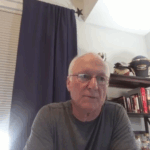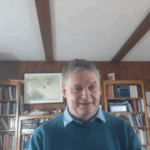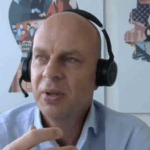Nature’s Blueprint for Healing: Dr. David Smith on Reversing Brain Injury, Sleep Apnea, and Human Resilience
What if the cure for brain injury, sleep apnea, and even sudden infant death syndrome wasn’t hidden in a lab—but in nature itself?
That’s the question driving Dr. David Smith, founder of DeltaChase and TBI Innovations, a physician and scientist with over 40 patents and a reputation for solving medical problems most researchers have written off.
In this episode of Industry Ignited, Dr. Smith sits down with host Dr. Leanne Aguilar to share how biomimicry—studying how animals solve complex biological challenges—led him to invent the Q-Collar and Sage Re-Breather, devices that could reshape how we think about brain health, recovery, and performance.
From Math to Medicine: The Making of a Problem Solver
Dr. Smith didn’t start in medicine—he began in math, physics, and chemistry, fascinated by how numbers could always lead to a clear answer. But one life-changing moment as a lifeguard set him on a new path.
“After saving two drowning victims, I realized nothing was more exciting than saving lives,” he said. “That moment changed everything.”
He became a doctor of internal medicine, learning to approach every case as a detective solving a mystery—a mindset that later guided his innovations.
“We don’t like the unknown,” he laughed. “We dig and dig until we find an answer.”
That curiosity—and the discipline of evidence-based reasoning—would lead him to one of medicine’s most elusive frontiers: traumatic brain injury (TBI).
When Helmets Aren’t Enough: The Birth of the Q-Collar
The spark came when a U.S. Army researcher challenged Dr. Smith to tackle TBI. Billions had been spent on better helmets, yet brain injuries remained unsolved.
Driving away from the military base, an idea struck him.
“If I crash my Volkswagen into a tank, we both die,” he told the officer. “Because our brains still move.”
That realization led to his Slosh Theory—the idea that concussions occur because the brain sloshes inside the skull during impact. His question became: What if we could gently limit that movement?
Inspired by woodpeckers, giraffes, and head-butting sheep, Dr. Smith discovered that many animals naturally protect their brains by slightly increasing blood volume inside the skull, creating a “bubble wrap” effect that cushions the brain.
From that observation came the Q-Collar, the first and only FDA-authorized medical device proven to reduce traumatic brain injury.
“It’s biomimicry at work,” Dr. Smith explained. “Nature figured it out—we just copied her homework.”
The collar applies light pressure to the jugular veins, gently increasing cranial blood volume and stabilizing the brain during impact—similar to what happens when you yawn.
Today, the Q-Collar is used by over 55,000 people, including military special forces, NFL athletes, and Secret Service trainers.
“They’re not issued the collars—they buy them,” Dr. Smith said proudly. “That tells you everything.”
Breathing New Life Into the Brain
If the Q-Collar protects the brain, Dr. Smith’s next innovation—the Sage Re-Breather—may help heal it.
Described as “CPR for the brain,” the Sage Re-Breather uses controlled CO₂ rebreathing to restore oxygen balance, improve blood flow, and accelerate recovery after trauma.
Contrary to popular belief, carbon dioxide isn’t a toxin—it’s a hormone-like molecule that helps regulate many body functions. Studying giraffes, sheep, and woodpeckers, Dr. Smith found they naturally retain more CO₂, protecting their brains from hypoxia and pressure damage.
“A head-ramming sheep’s CO₂ level is nearly 50% higher than a human’s,” he explained. “That’s not an accident—it’s evolution.”
By mimicking that physiology, the Sage Re-Breather could revolutionize treatment for:
Traumatic brain injury
Sleep apnea
Altitude sickness
Hearing loss
And potentially even neurodegenerative diseases like Alzheimer’s
Early trials show the device can improve oxygen delivery and eliminate sleep apnea symptoms in minutes—without machines or drugs.
“Two minutes of breathing through it, and my altitude symptoms disappear,” Dr. Smith said. “That’s the power of nature.”
From Battlefield to Bedside
While the military sees immediate potential in Dr. Smith’s devices for soldiers and pilots, civilian healthcare applications could be even broader.
The Q-Collar is already FDA-cleared and available over-the-counter, and DeltaChase is now in talks with the FDA to bring the Sage Re-Breather to market within two years.
Though regulatory hurdles have slowed the timeline, Dr. Smith remains optimistic. “They’re not adversarial anymore,” he said of the FDA. “They’re trying to help us find a path forward—it’s just slower than I’d like.”
He’s also a finalist in the U.S. Army’s XTech9 Search competition, earning top recognition for his wearable innovations and ongoing collaboration with defense research programs.
Technology, Safety, and the Evolution of Steel
Over two decades, Daniel has seen steel construction evolve from faxes and paper blueprints to 3D modeling, digital collaboration, and AI-driven design.
“Back in 2005, I was faxing bids,” he laughed. “Now, we’re building 3D models that coordinate every bolt before steel even hits the site.”
He credits these innovations with saving time and money—and with attracting a new generation of digital-savvy talent. “You can literally build the building on a computer screen,” he said. “It’s not just blue-collar anymore. Construction has room for data analysts, modelers, and tech engineers.”
Safety, too, has transformed. From hardhat training to giving every worker the right to stop unsafe work, Daniel believes awareness and empowerment are key. “We tell our guys—if something feels off, stop. Ask questions. One bad decision can cost a life.”
Lessons in Innovation: Fail Fast, Learn Faster
With over 40 patents and decades of hard-won lessons, Dr. Smith has one piece of advice for inventors:
“Fail fast. Don’t fall in love with your idea—fall in love with the truth.”
He calls it inventor’s bias: the tendency to protect ideas instead of testing them. “If someone finds a flaw in your concept, thank them,” he said. “They just saved you six months and half a million dollars.”
Every one of his inventions has been peer-reviewed and validated by top institutions including Harvard, Mayo Clinic, West Virginia University, and Cincinnati Children’s Hospital.
“It may start in my garage,” he said, “but it ends in the world’s best labs.”
The Future of Biomimetic Medicine
Looking ahead, Dr. Smith envisions a future where biomimicry shapes the next wave of healthcare innovation—from self-healing tissues to better hearing protection and even more efficient sleep.
“Nature has had millions of years of R&D,” he said. “We just need to pay attention.”
His upcoming book, When Heads Come Together, explores these principles in depth—revealing how creatures like bats, woodpeckers, and giraffes hold the secrets to solving humanity’s toughest medical puzzles.
“Technology didn’t invent resilience,” he smiled. “Nature did. I just borrowed her playbook.”
Listen to the full episode.
Interested in being featured on the podcast? Reach out to podcast@industryignited.com







